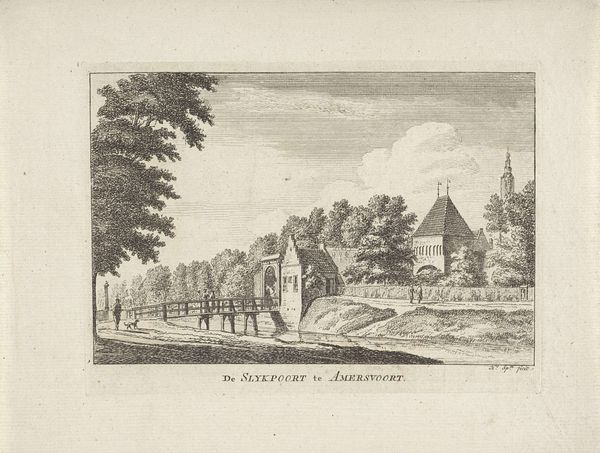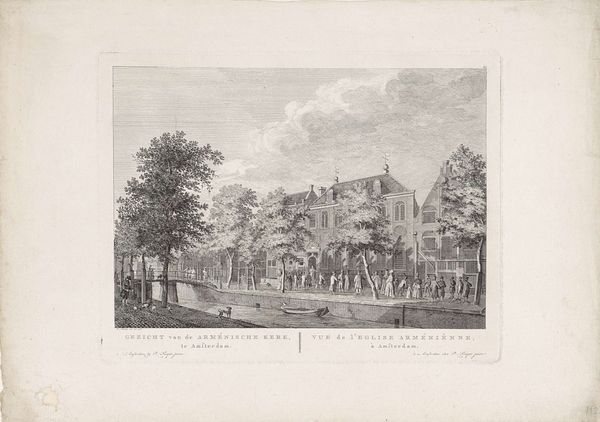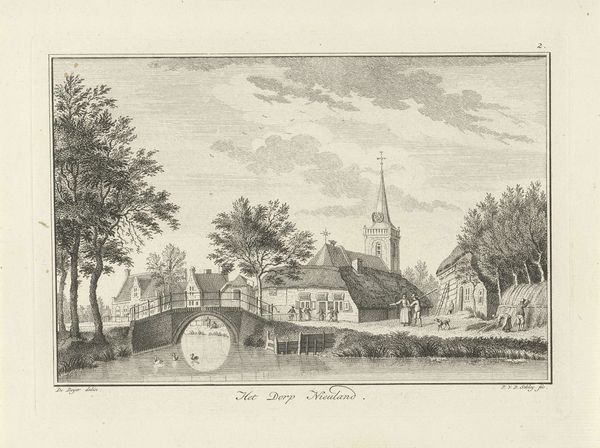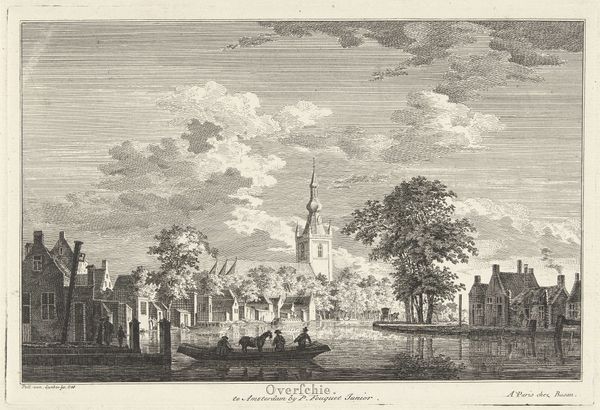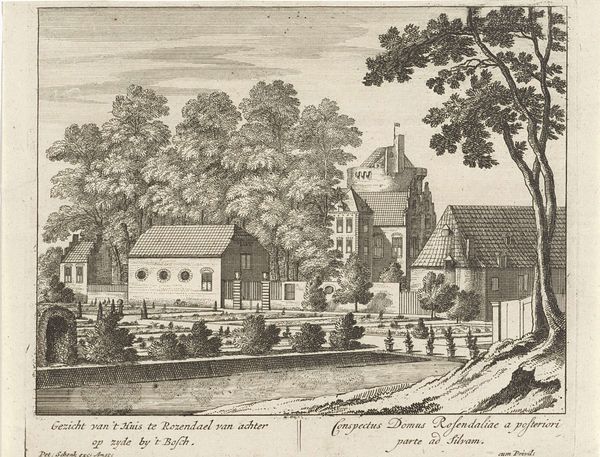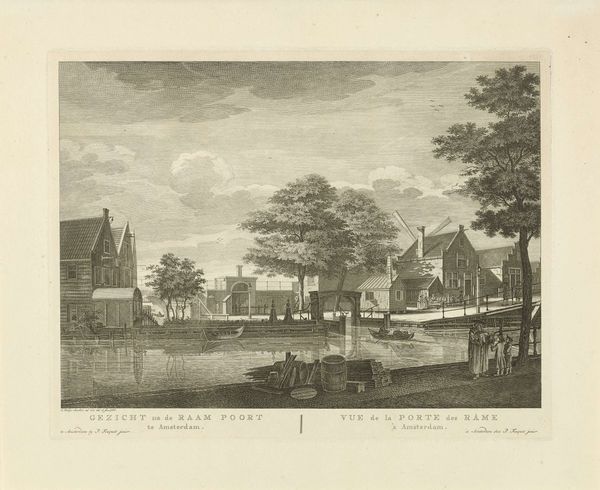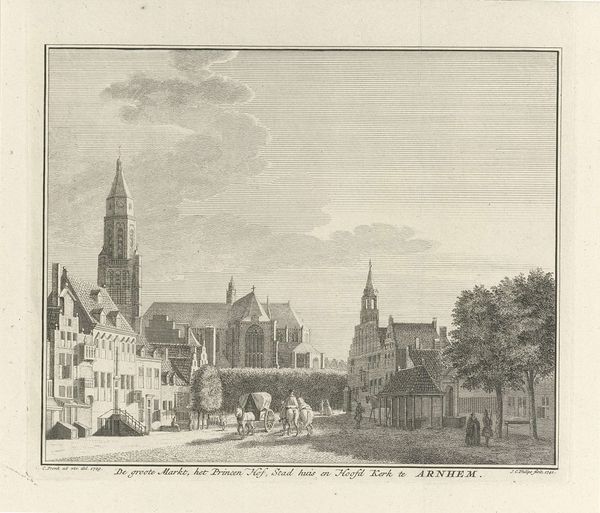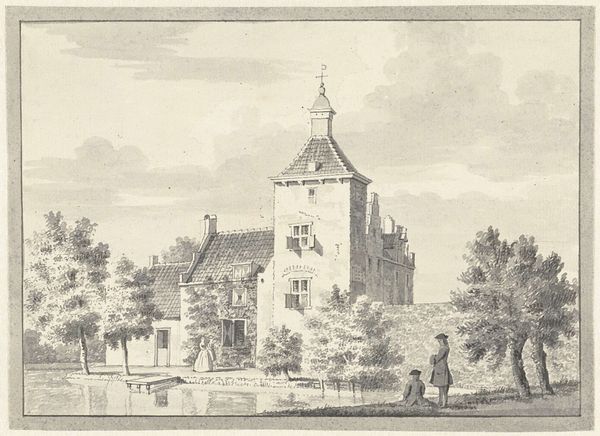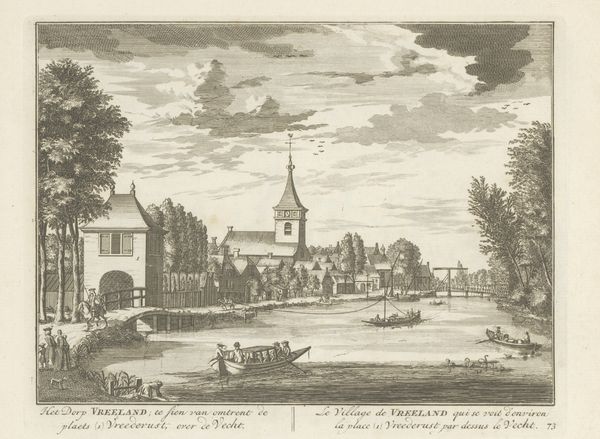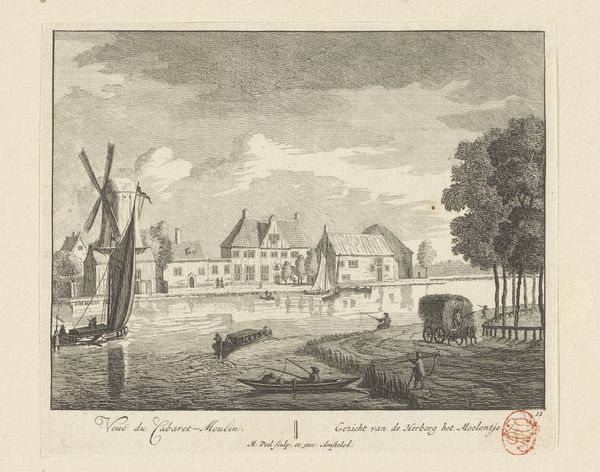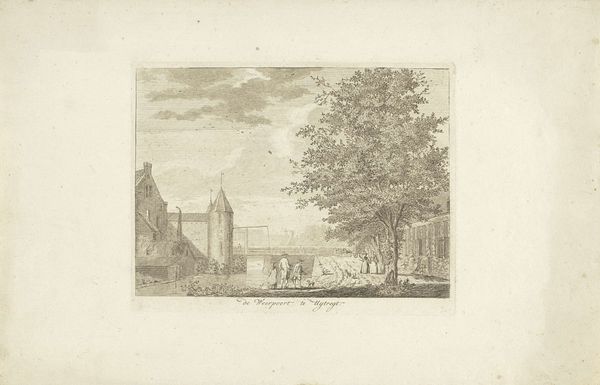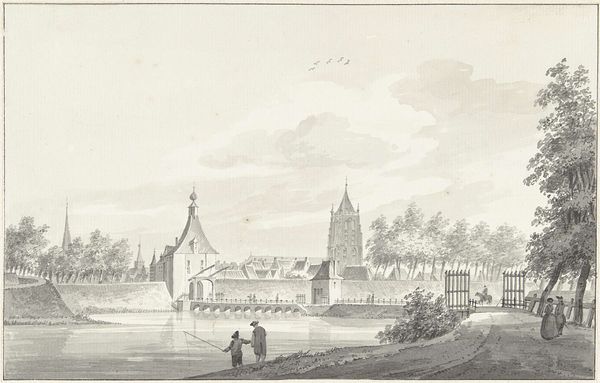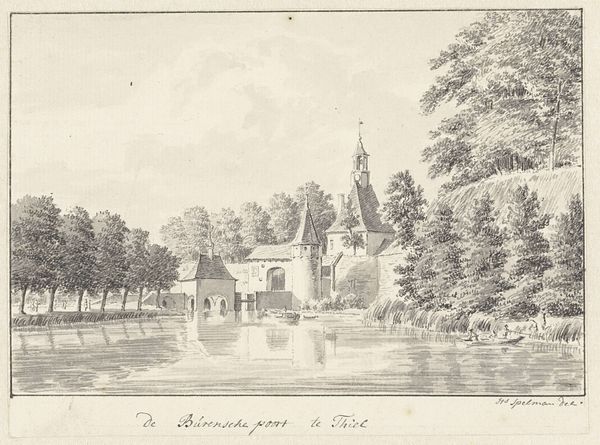
print, engraving
#
aged paper
#
light pencil work
#
dutch-golden-age
# print
#
pencil sketch
#
old engraving style
#
sketch book
#
landscape
#
personal sketchbook
#
pen-ink sketch
#
pen work
#
sketchbook drawing
#
cityscape
#
pencil work
#
engraving
#
realism
Dimensions: height 159 mm, width 198 mm
Copyright: Rijks Museum: Open Domain
Editor: So, this is "Gezicht op Abcoude," an engraving from between 1762 and 1822, by Hermanus Petrus Schouten. It's currently held at the Rijksmuseum. I'm struck by the tranquility; it’s such a serene village scene. What story do you think this piece tells about the relationship between the Dutch and their landscape at that time? Curator: That's a great starting point. Consider the period: late 18th, early 19th century. This was a time when the Dutch Republic had waned, giving way to various political upheavals. This engraving, therefore, offers a nostalgic gaze back to a seemingly simpler, more stable time. What kind of statements about the value of rural life can we extract when compared with contemporary, rapidly modernising urban spaces? Editor: So, the focus on the village and the almost picturesque way it's portrayed is a deliberate commentary on societal changes happening at the time? Curator: Precisely. The detail placed on everyday life along the canal and the presence of the church speak to enduring community values. Note also what is missing - industrial development, for example. Could that absence itself be interpreted as a political statement about which parts of Dutch history are worth celebrating? It becomes more complicated as, of course, idyllic country life for some involved oppression of others. Does this art reflect that at all, do you think? Editor: It does seem a very selective, potentially rose-tinted view of village life, now that you mention it. I suppose this is where analysing its historical and social context really adds layers of understanding that you wouldn’t necessarily get at first glance. I will be sure to ask similar questions for all artworks I analyse. Curator: Absolutely. It shows how artistic choices reflect wider social and political considerations. We are essentially viewing Dutch society through the lens of its self-representation.
Comments
No comments
Be the first to comment and join the conversation on the ultimate creative platform.
